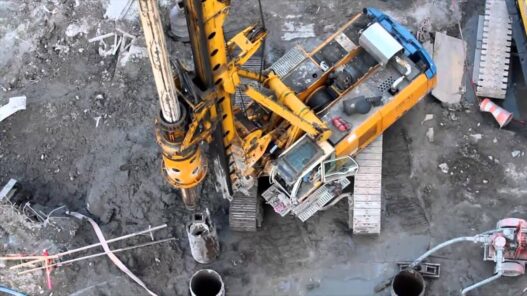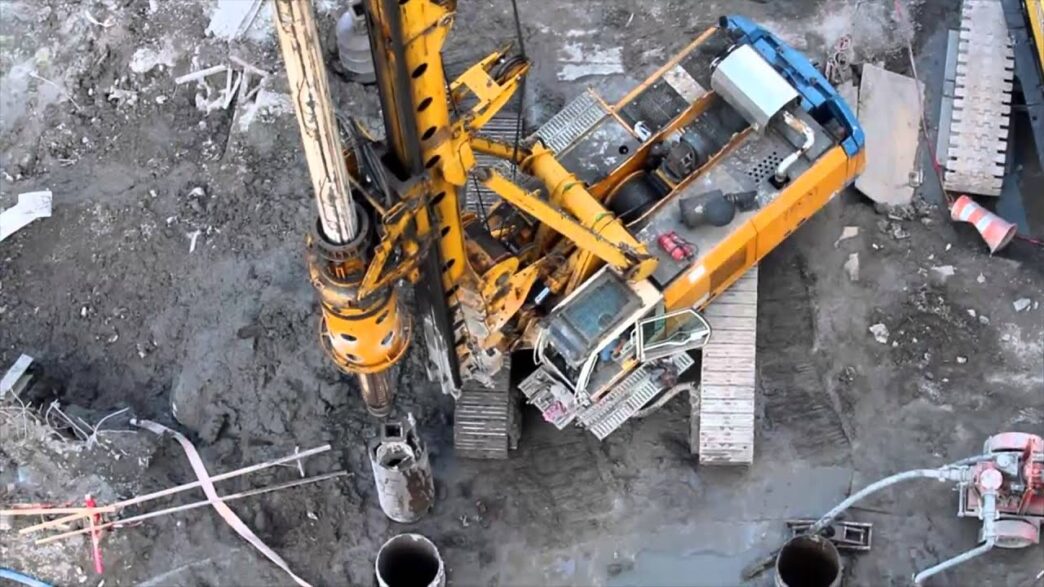Contiguous Wall:
Contiguous walls and piling are important construction and civil engineering methods often used in projects requiring deep digs and ground sustenance. While they are usually utilised in retaining walls, basements, and foundation works, some lesser-known features of these methods can notably impact their effectiveness and cost. Understanding these “top secrets” about contiguous walls and piling can help you make more knowledgeable decisions about your construction projects, optimize designs, and save time and money.
Contiguous Walls and Their Purpose
A contiguous wall is a retaining wall formed by constructing a series of closely spaced bored piles, leaving minimal gaps between them. This technique is widely used in construction sites where soil retention is essential, especially in urban areas with limited space or near existing structures. Here are some secrets about contiguous walls that many might not be aware of:
Ideal for Dry Soil Conditions
Contiguous walls are most effective in dry soil conditions where groundwater is minimal. The small gaps between the piles can allow for water seepage, which might not be the best option for sites with a high water table. Alternative techniques like secant piling are often recommended for wetter soils due to their better water-blocking capabilities.
Customizable Flexibility in Design
One of the less-known advantages of contiguous walls is their flexibility in design. Contractors can adjust the piles’ spacing, diameter, and depth based on site conditions and structural requirements. This customisation allows for tailored solutions that maximise stability while minimising material costs.
Not Always a Permanent Solution
Contiguous walls can be used as either temporary or permanent structures. While they are durable, they are often used as a temporary measure during the construction phase, with a more permanent retaining wall built afterwards. This distinction is important in budgeting and planning as it affects the overall project timeline and expenses.
Piling: The Backbone of Foundation Stability
Piling is a method used to transfer the load of a structure deep into the ground to ensure stability and prevent settlement issues. The process involves driving or drilling long, slender columns (piles) into the ground. Here are some secrets and lesser-known aspects of piling that can optimise your construction projects:
Types of Piling Beyond the Basics
While many people are familiar with common pile types like bored piles and driven piles, other specialised piles offer unique advantages:
Micropiles:
These are small-diameter piles used in areas with restricted access or where minimal vibration is essential. They are perfect for underpinning existing structures or in difficult ground conditions.
CFA Piles (Continuous Flight Auger Piles):
These piles are ideal for soft ground and cause less noise and vibration than traditional piling methods. They are often used in urban construction to minimise disturbance to the surrounding area.n
Soil Testing Can Save You Money
A detailed soil investigation is crucial before deciding on the type of piling required. Soil testing can reveal the ground’s composition, strength, and load-bearing capacity. Understanding these factors allows engineers to select the most suitable piling technique, potentially saving money by avoiding overly conservative designs or unsuitable piling methods.
Secrets to Combining Contiguous Walls and Piling
Combining contiguous walls with piling can enhance stability and structural integrity, especially in projects with complex soil conditions or heavy loads. Here are some insights into maximising the benefits of using both methods together:
Strategic Integration for Water Control
While contiguous walls alone may struggle with water seepage in high groundwater conditions, integrating them with certain types of piles can enhance their water-resistant capabilities. For instance, combining contiguous walls with secant piles (where piles overlap) can create a more watertight barrier, preventing groundwater infiltration during deep excavations.
Soil Anchors for Extra Stability
Many engineers use a secret to increase stability: adding soil anchors or tie-backs to contiguous walls. These anchors are driven into the ground behind the wall and tensioned to provide additional support against lateral soil pressure. This technique can be particularly useful when the wall height exceeds standard limits or when dealing with loose soil conditions.
The Role of Ground-Freezing Techniques
Ground-freezing techniques are an innovative approach to enhancing contiguous wall performance in wet conditions. Engineers artificially freeze the soil around the excavation area to create a temporary but effective seal that prevents water from entering the site. When combined with contiguous walls and piling, this method can significantly improve the efficiency and effectiveness of the excavation process.
Conclusion:
Contiguous walls and Piling Basildon are essential construction techniques that offer a wide range of benefits when understood and applied correctly. By knowing these “top secrets,” including the advantages of soil testing, the integration of soil anchors, friction piles, and cost-effective design methods, you can make more informed decisions that lead to safer, more efficient, and cost-effective projects. Embracing these lesser-known strategies can help you optimise the performance and budget of your groundwork and construction endeavours.












